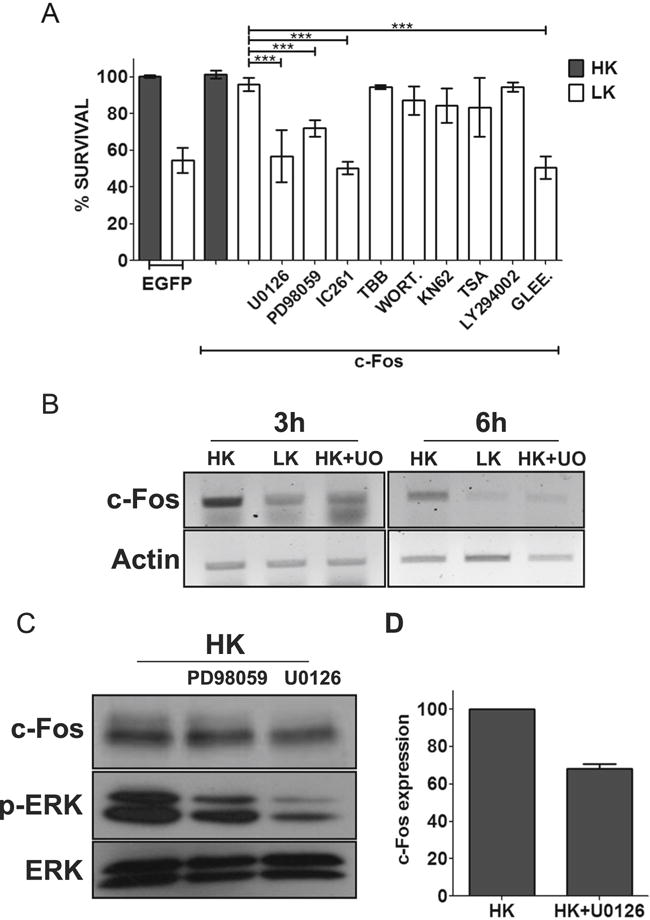Fig. 5.

c-Fos protection is dependent on MEK-ERK pathway, casein kinase 1 (CK-I), and c-Abl. a CGN cultures, after 24 h of transfection with EGFP or Flag-c-Fos, were either treated with HK medium, LK medium, or LK medium supplemented with 10 μM U0126, 40 μM PD98059, 10 μM IC261, 10 μM TBB, 100 nM wortmannin (WORT.), 50 μM KN62, 1 μM trichostatin A, 10 μM LY294002, or 50 μm Gleevec (GLEE). Immunocytochemistry was performed 24 h after treatment, and cell viability of transfected cells was assessed and normalized to EGFP-transfected control. Results were obtained from at least three separate experiments done in duplicates. Statistical analysis using Student’s t test was performed where *** represents p<0.0001. Inhibitors against PI3 kinase-AKT, CaMK, HDACs, and CK-2 did not have any effect on c-Fos-mediated survival. However, c-Fos-induced protection was abolished by inhibitors against MEK-ERK signaling, CK-I, and c-Abl. b RNA isolated from CGNs treated with HK, LK, or LK+U0126 for 3 and 6 h was subjected to RT-PCR analysis for c-Fos. Actin serves as loading control. c Whole-cell lysates prepared from CGNs treated with HK, HK+ PD98059, or HK+U0126 for 3 h were subjected to Western blot analysis using anti c-Fos and anti p-ERK antibody. ERK serves as a loading control. d c-Fos protein levels were quantified and normalized to ERK levels using densitometric analysis of Western blots from three different experiments
